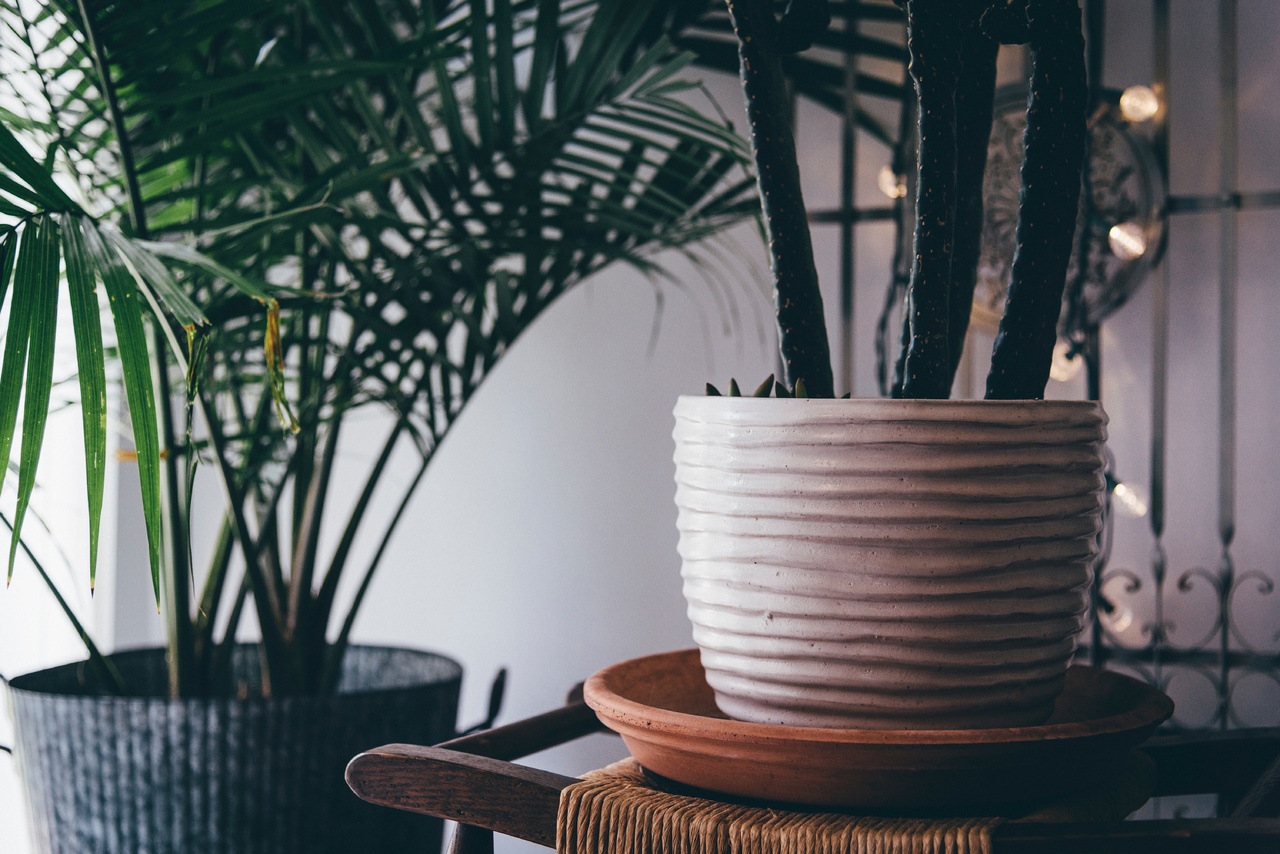
Palm trees are plants with unique characteristics, so much so that they are very easy to recognize. But in addition, they have a very high ornamental value, which is why species that may be inside homes are often searched for.
I am not going to lie to you: there are not many that adapt well to the conditions of the houses or flats; Even so, It is relatively easy to decorate your home with one of the 7 types of indoor palm trees that we are going to recommend below.
Things you have to know
Before getting into the matter It is very important that you take into account that there are NO indoor palm trees, nor do indoor plants. The reason is that plants have lived on Earth for more than 300 million years; instead the oldest fossil remains of our species, Homo sapiens, which have been found date back "only" 350.000 years. And, if you are curious, we began to develop gardening around 1500 BC. C.
Until then, each and every one of the plants lived only outside, in their habitats. Until modern humans arrived and 'domesticated' some, they were not used to decorate homes, but were cultivated in primitive orchards. In short, what I want to make clear is that you should not be fooled by the labels that are often used today to sell more.
What do "indoor" palms have in common?
When we speak of plants, or in this case of indoor palm trees, we refer to a series of species that cannot live outside during winter. These species can vary from country to country, depending on the climate. For example, the Howea forsteriana it may be an "indoor palm" in a province where there are intense frosts, but in the Mediterranean region, with mild frosts, it is grown without problems in gardens.
Types of indoor palm trees
If you want to decorate your home with palm trees, take a look at the ones we recommend:
Archontophoenix
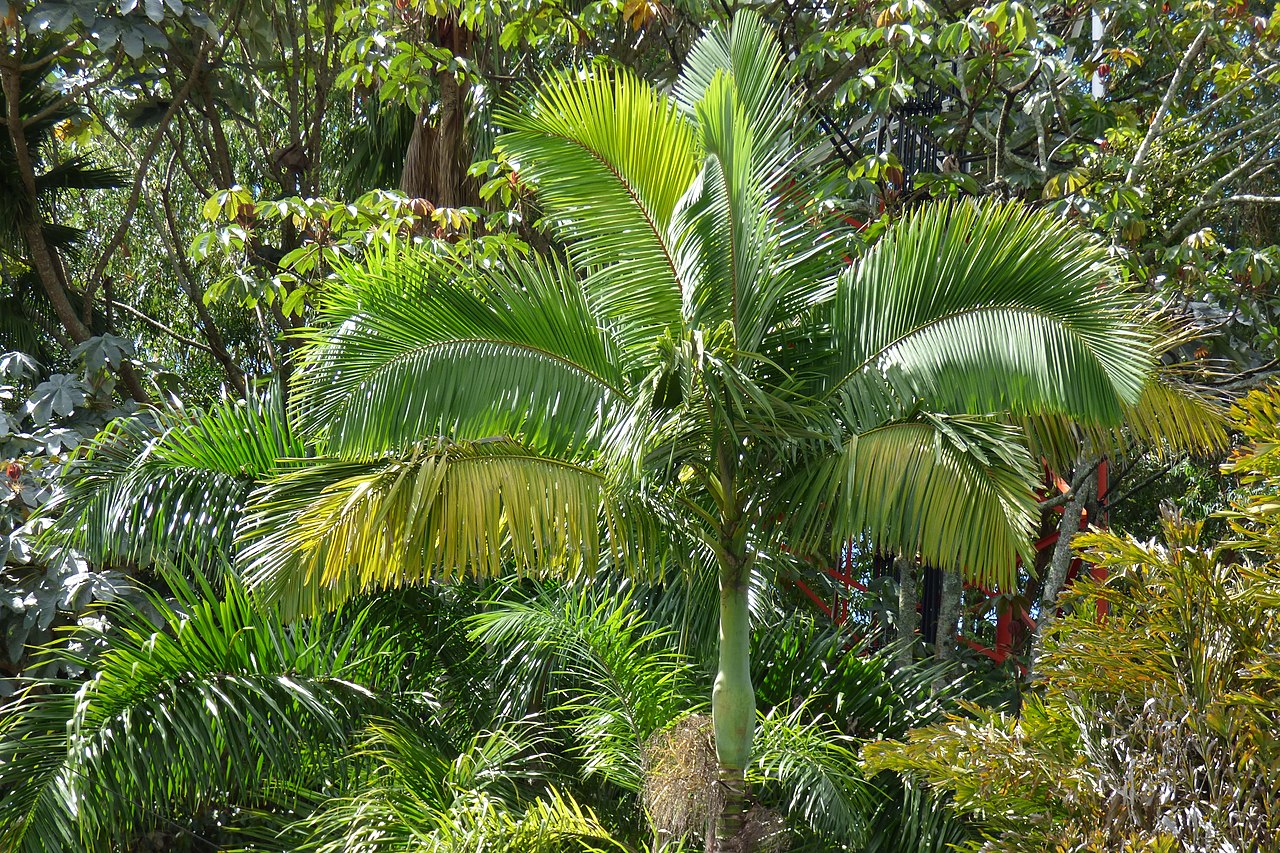
Image - Wikimedia / Alejandro Bayer Tamayo from Armenia, Colombia
All the Archontophoenix They are a spectacular genus of palm trees that, While it is true that they reach a height of 20 to 30 meters, they can be kept in pots for many, many years, and I would even say his whole life, since his trunk does not exceed 30cm thick.
They like water quite a bit, so the waterings during the summer have to be frequent, but in winter they will be watered 1 maximum 2 times a week.
Adonidia merrillii
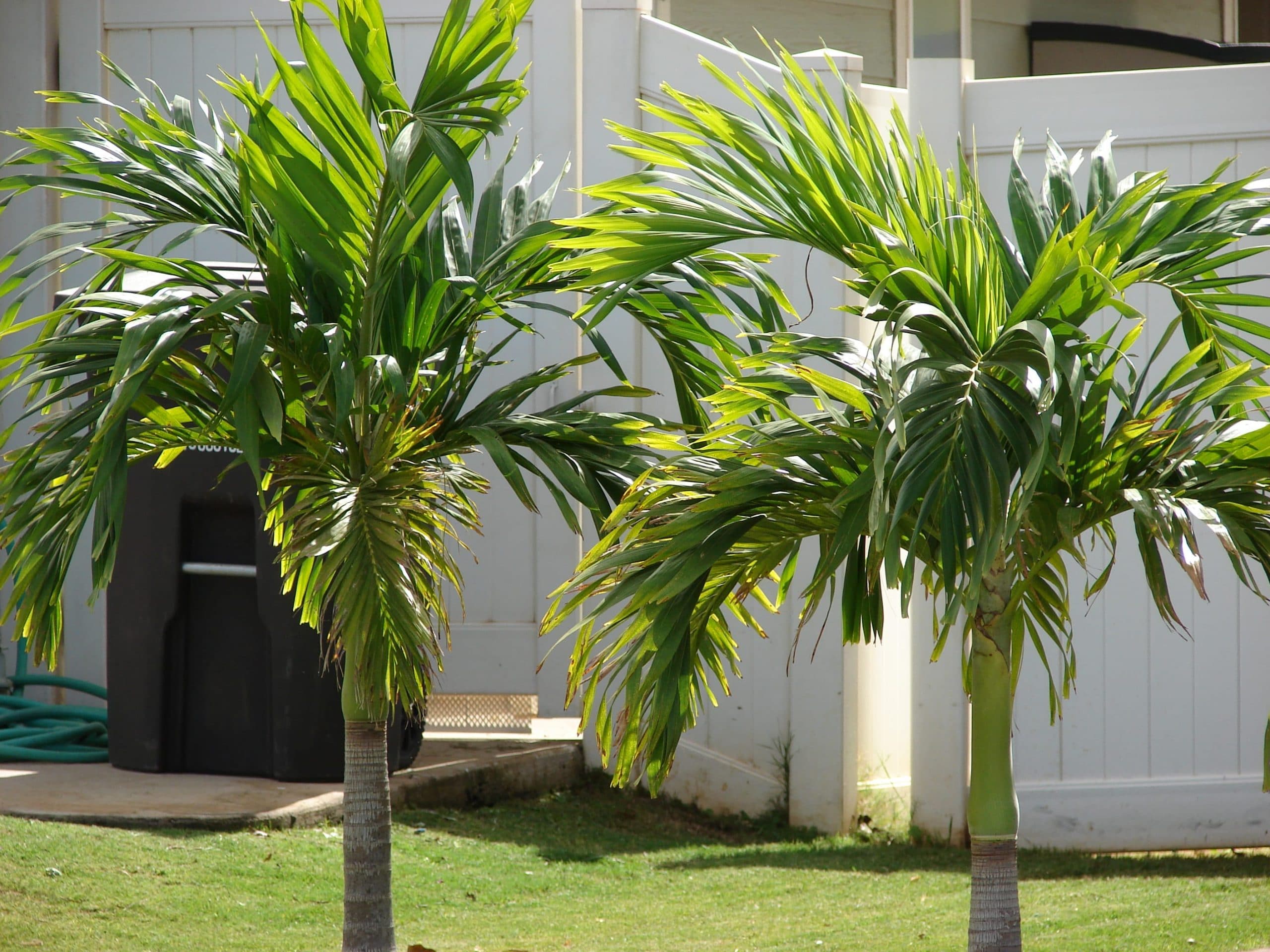
Image - Wikimedia / Forest & Kim Starr
Known as the Christmas palm tree, or by its previous scientific name Veitchia merrillii, because it produces red fruits during those dates, it is a species that grows up to 5-6 meters tall, with a thin trunk about 25cm thick. In pots it usually grows slowly, so having it inside homes is a delight 😉.
Of course, it is important that it is protected from direct light, as its leaves burn easily. The waterings have to be frequent in summer, and moderate the rest of the year.
Chamaedorea
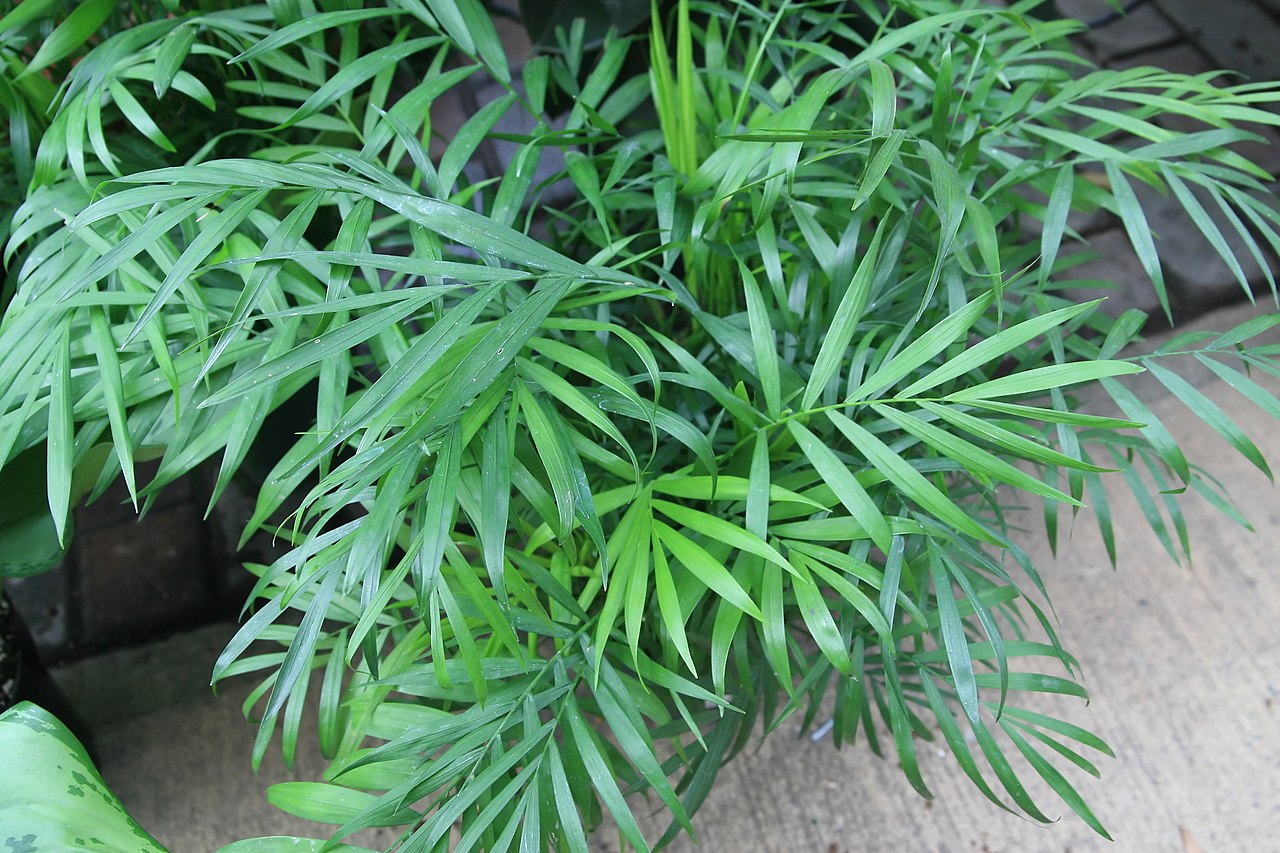
Image - Wikimedia / David J. Stang
All the Chamaedorea They are the "indoor" palm trees par excellence. They do not usually exceed 3 meters (except the Costa Rican C., which reaches 15m) so that they are ideal for growing in pots. The best known is the C. elegans or lounge palm, but there are others that are also easy to get, such as the C. metallica, which has bifid leaves of a beautiful bluish-gray color, or the C. seifrizii called the bamboo palm tree because of its kinship with those plants.
They are shadow palms, but indoors they appreciate being in bright rooms, and receiving more or less frequent waterings.
Dypsis lutescens
The bad call areca (There is a genus of tropical palm trees that is called that, you can find out by clicking here), or bamboo palm, is a multicaule plant, that is, with several trunks, widely cultivated indoors. In the nurseries, pots with multiple specimens are sold, which as they grow they produce new stems. It can reach a height of up to 6 meters, but the normal thing is that it stays between 1,5 and 3 meters.
At home it must be in a bright room, away from drafts, and receive water 2 or 3 times a week in summer and somewhat less the rest of the year.
Howea forsteriana
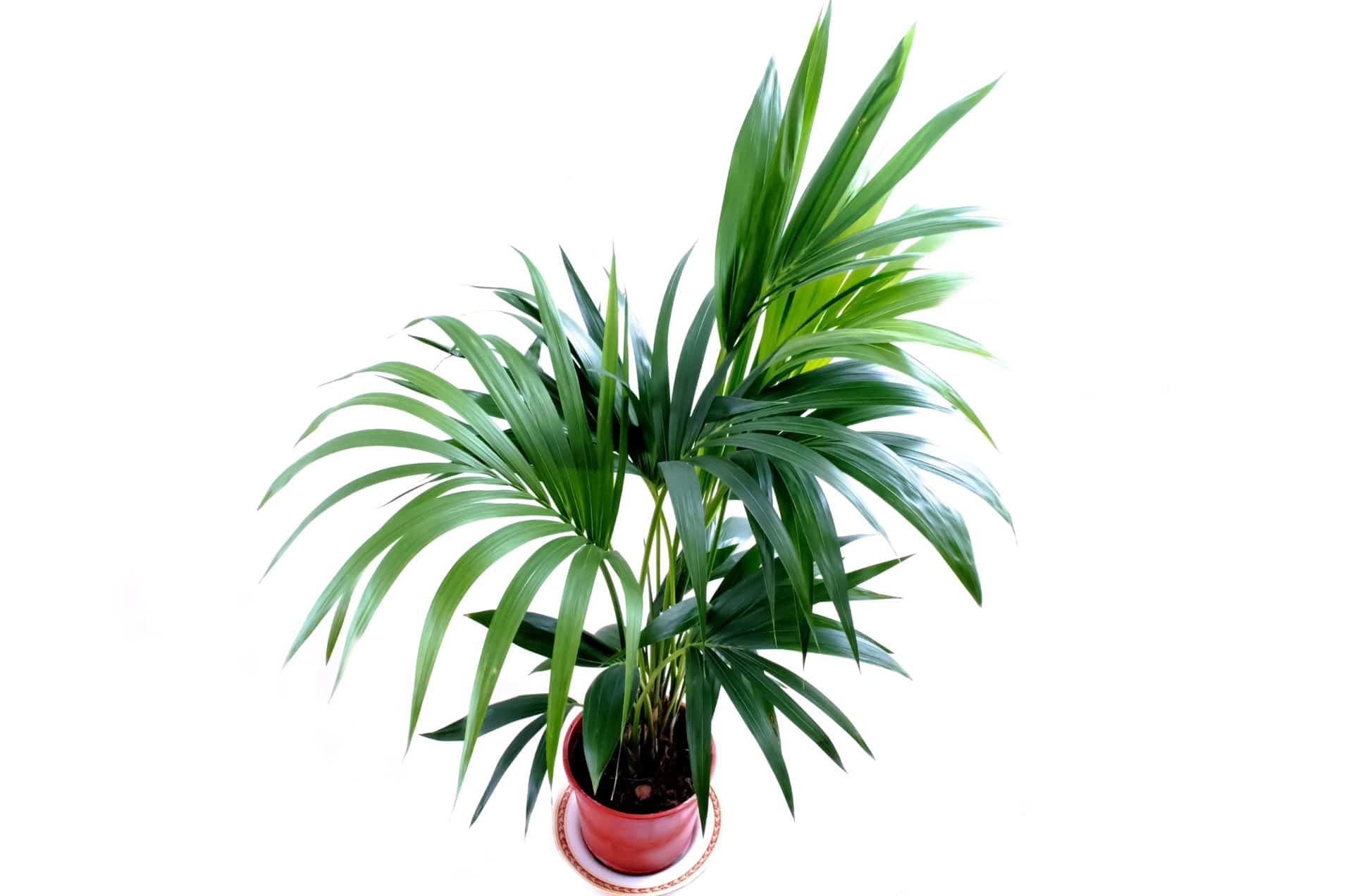
Also known as Kentia, is a beautiful unicaule species (of a single trunk) that reaches a height of 10 to 15 meters. Due to its slow growth, it is grown in pots without difficulty, even throughout its life as its trunk does not thicken too much, only about 15cm.
In gardens it is kept in semi-shade or even in shade because the sunlight burns its leaves, but indoors it must be in a place with a lot of light, otherwise it will lose color. Regarding irrigation, it has to be watered about 2 times a week in summer, and 1-2 a week the rest of the year.
licuala grandis
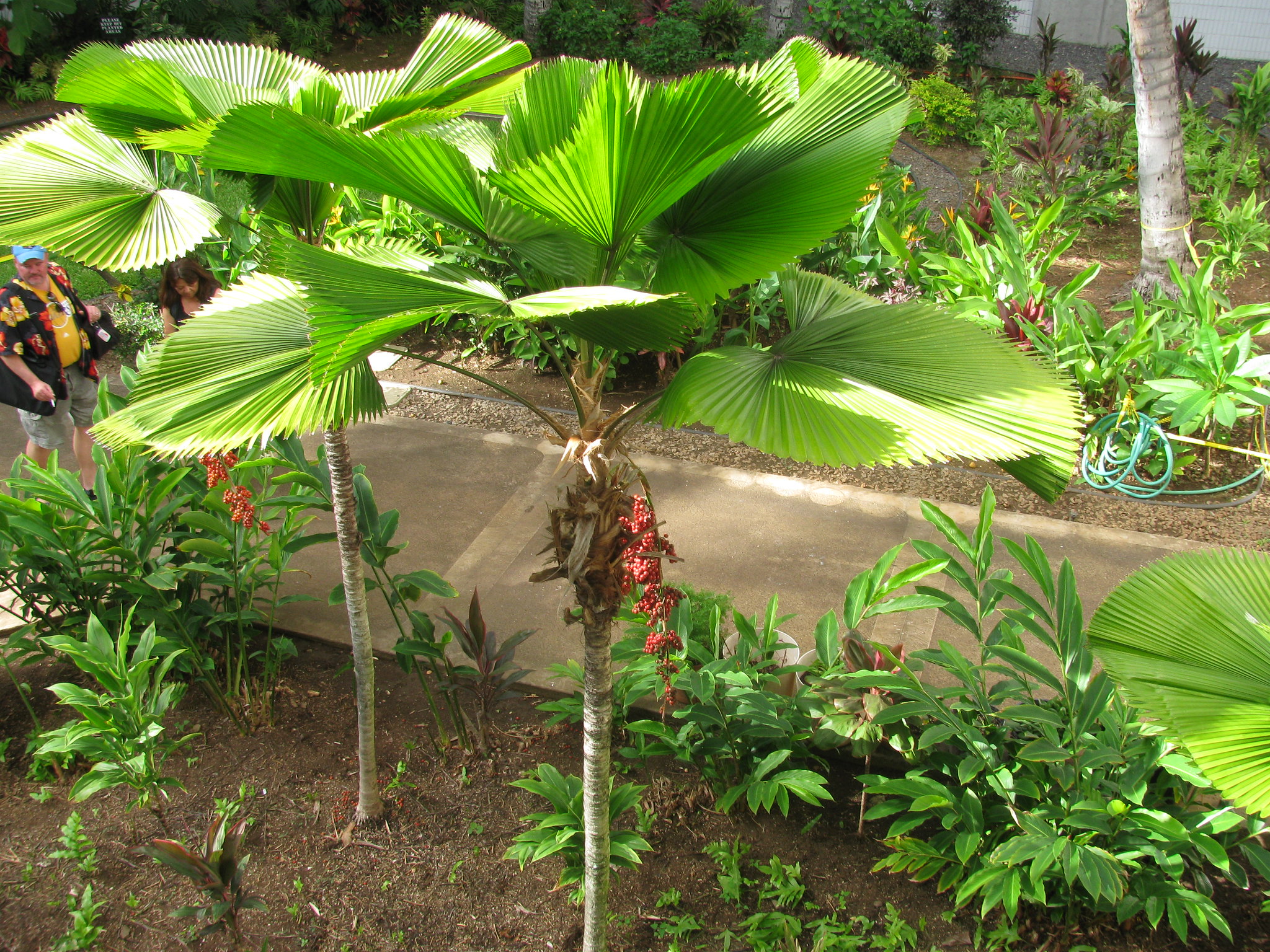
Image - Flickr / Forest and Kim Starr
Known as liquefy or liquefy large, is a slow-growing palm tree that reaches a height of up to 3 meters, with a single trunk about 6 centimeters thick. It can be had in bright interiors, in spacious rooms.
Irrigation must be abundant throughout the year, but in winter it will be reduced.
Phoenix roubleni
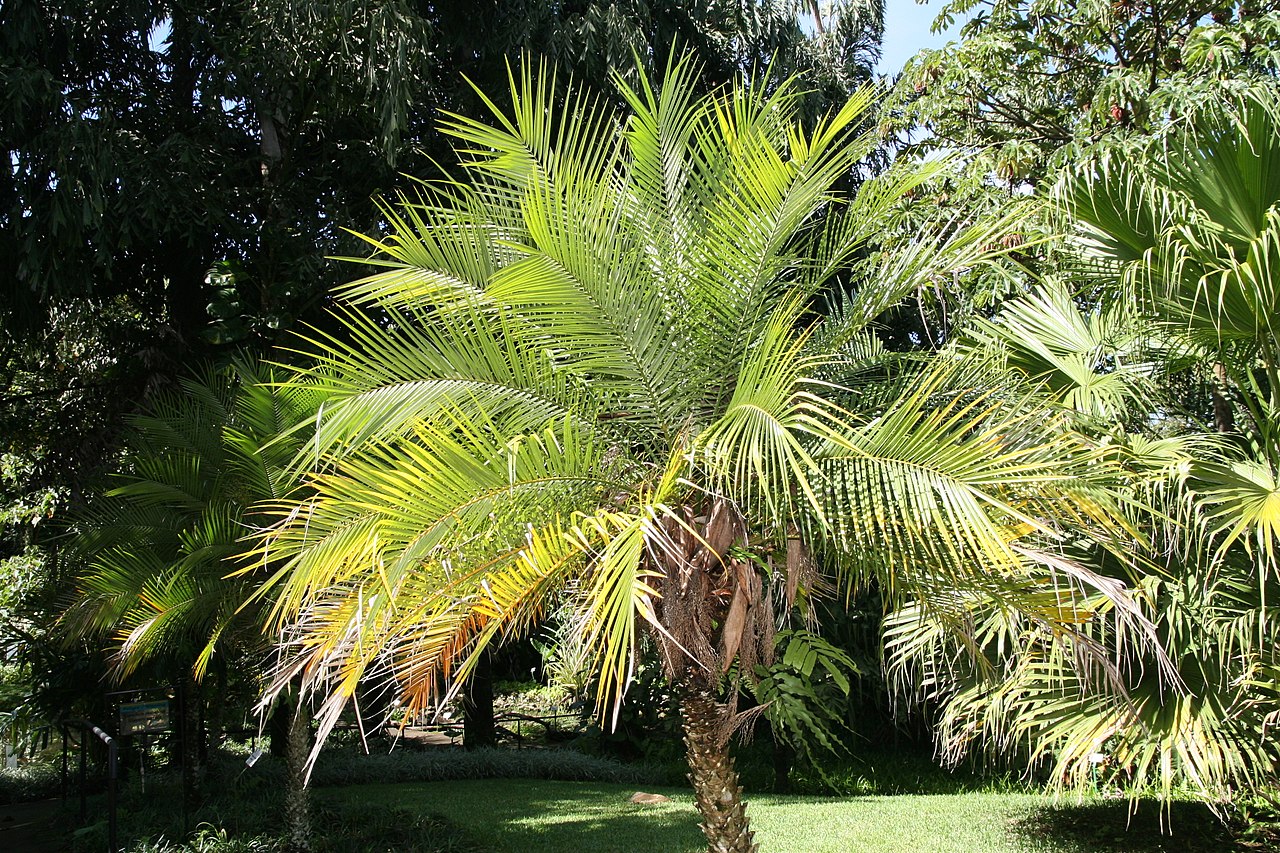
Image - Wikimedia / David J. Stang
Call dwarf palm, it is a very elegant plant that grows up to 5 meters maximum, but it does not usually exceed 2 meters. It is, by far, an exceptional species to have indoors, but it needs a lot of light, which is why it should be placed in bright interior patios or in rooms where there are glass windows through which light enters.
If we talk about irrigation, it has to be watered once or twice a week. Resists drought better than waterlogging.
raphis excelsa
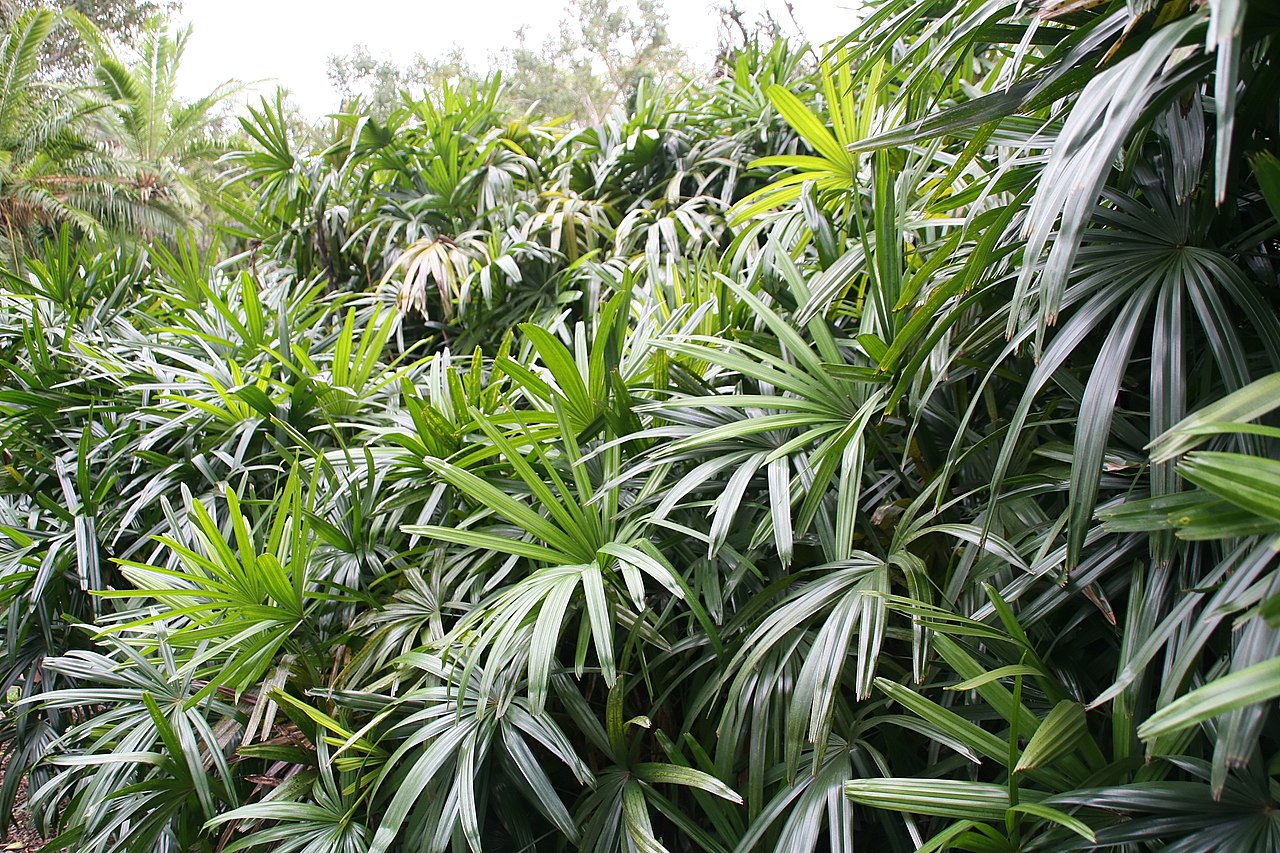
Image - Wikimedia / David J. Stang
Known as Chinese palmerita or rapis, is a multiple trunks species that reach a height of 4 to 5 meters. Its webbed leaves and thin stems make it a very interesting plant for interiors, for example, it is perfect in bright living rooms.
Irrigation must be frequent in summer, but the rest of the year 1 or 2 irrigations every 10-15 days will suffice.
What do you think of these "indoor" palm trees? 🙂
In our case, I am referring to Costa Rica, the palm trees that are best adapted to interiors is Chamadorea, especially C. cataractarum. Although palm trees are not widely used indoors, they are usually planted outdoors.
Hi Edgar.
Yes, it is that having a tropical climate it is almost better to have all the palm trees outside hehe 🙂
good day
I am Eduardo Alvarez, from Monterrey Mexico, winters somewhat cold (there have been few frosts, historically) and summers from 38 ° C to 45 ° C, although mostly 38 ° C and dry
I have a terrace and I want to put Adonidia merrillii in pots, I have some doubts, in your publication of these palm trees you say that »it is important that it be protected from direct light» what would you mean that they can only be indoors? but I have seen them outside (even the photo they put is outside).
and what compost / fertilizer do you recommend?
thanks!
Hello Eduardo.
True, many photos on the Internet of this palm show it exposed to direct sun, but this is only possible if the climate is humid and without extreme temperatures. If the sun is very strong and the environment is dry, the leaves burn quickly. Therefore, in your case it is advisable to have it in semi-shade.
With regard to compost or fertilizer, whatever is specific to palm trees will do.
regards